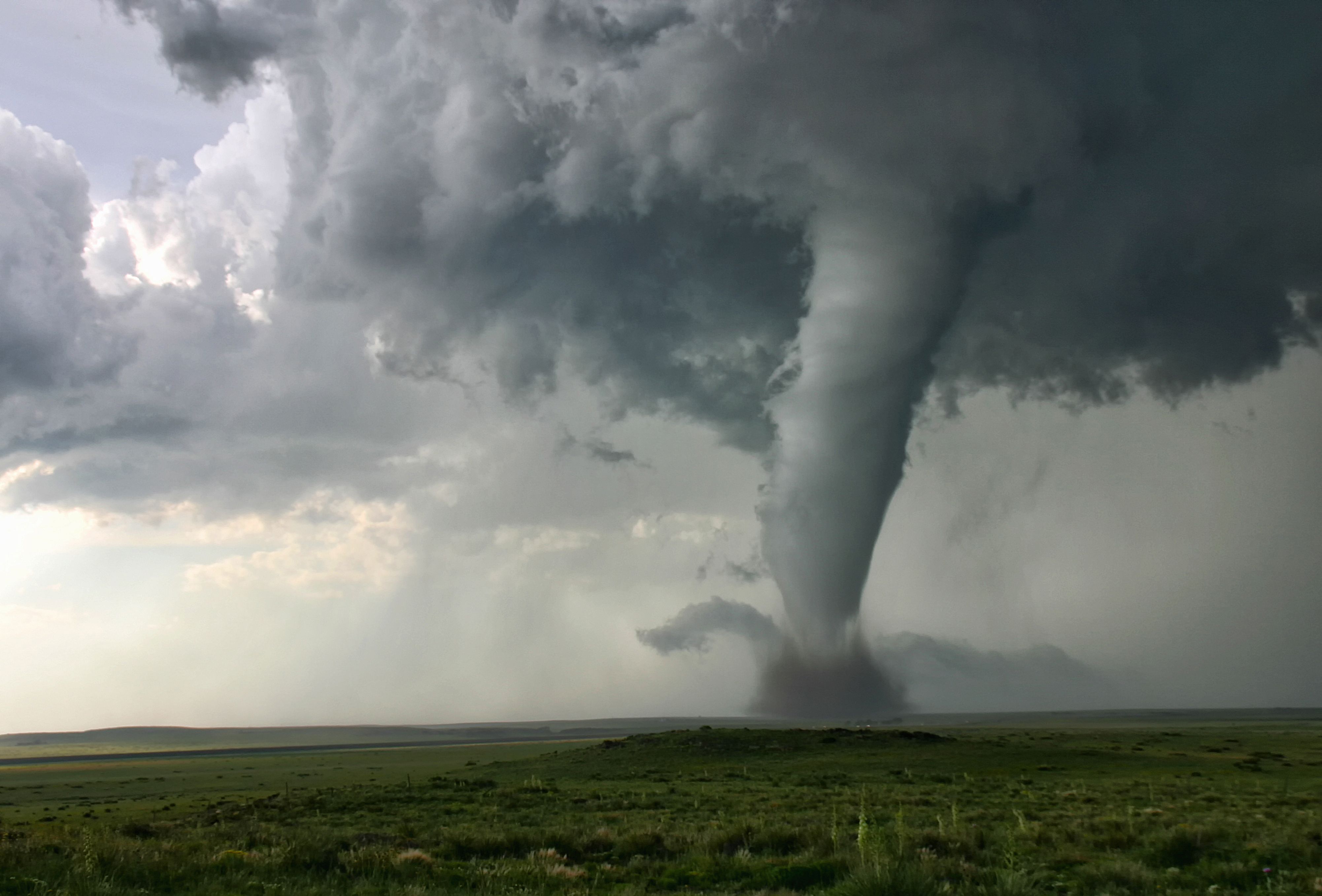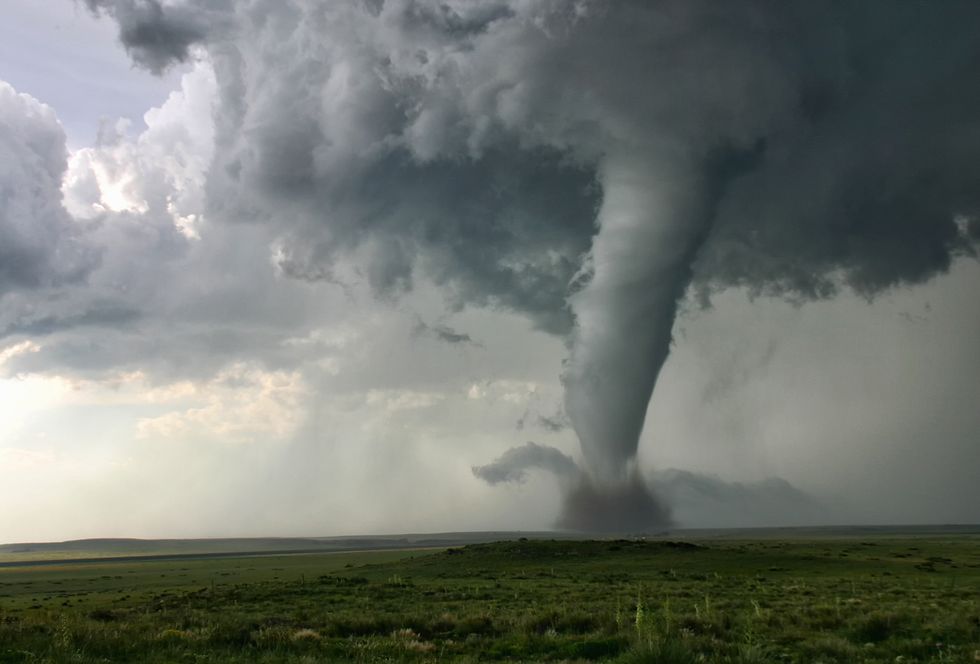A menacing thunderstorm that threatens to spawn a tornado sends most people scrambling for shelter. But teams of scientists from across the country rush toward the storm.
Jana Houser, associate professor of meteorology at The Ohio State University, travels with a large flatbed truck carrying an instrument called Rapid X-band Polarimetric (RaXPol) radar that provides high-resolution scans of a storm in a matter of seconds. Howard Bluestein, a meteorology professor at University of Oklahoma, uses ground-based and airborne Doppler radar, and Christopher Nowotarski, associate professor of atmospheric science at Texas A&M University, launches weather balloons. Scientists also use uncrewed aircraft systems, or drones, in the field.
Their tools may be different, but the goal is the same: to get better at knowing which storms are most likely to form a tornado and provide earlier and more accurate warnings to people in its path.
🌀What You Need to Know About How Tornadoes Form
Large storms known as supercells produce tornadoes, Houser tells Popular Mechanics. These thunderstorms have strong changes in wind speed and direction from the surface upward—known as vertical wind shear—with warm and moist air at the ground and cooler air aloft. These conditions create fast updrafts that rotate horizontally like a tire, then shift to rotating vertically like a top. Upward suction can intensify the rotation into a tornado.
Supercell thunderstorms are rare but disproportionately lead to severe weather like tornadoes, Nowotarski tells Popular Mechanics.
Pursuing a Storm is Tricky
Scientists started using portable radar in the late 1980s and mounting doppler radar on trucks in the 1990s, Bluestein tells Popular Mechanics. Mobile radar lets scientists get close enough to catch storms in the act of producing a tornado.
But not too close. “We try to be far enough away so we don’t have to relocate every few minutes, because we want to collect data for at least five to 10 minutes,” Houser says. “So maybe fifteen-ish miles away. We let the storm come to us and as it starts to pass, we move and position ahead of the storm again.” In the process, she and her team may end up only a mile from the storm.
“It’s like playing chess, trying to anticipate a few moves ahead of Mother Nature,” she adds. “We strategically select areas with good visibility from where we are to where the tornado is.” That describes the area colloquially known as Tornado Alley—a mostly flat and treeless swath in the middle of the country from northern Texas up through Oklahoma, Kansas, and Missouri.
Logistical decisions often must be made quickly, she adds. “You wake up, look at new forecasting and modeling data, and decide where to go. It might be two hours away or seven hours, but we get started moving in the general direction. The target area changes through the day and we relocate. If there are multiple storms, the question becomes, which one do you go for? Storms can be 45 to 90 minutes apart, so at some point you have to commit. That is part of the excitement and frustration, and another reason we need to better understand processes inside storms to know which ones will produce tornadoes.”
👀 Among the more unusual tools in a tornado chaser’s arsenal is the Tornado Intercept Vehicle (TIV). Film director Sean Casey designed two versions of this tank–on–wheels for filming within a tornado with an IMAX camera, and you can see this footage on Storm Chasers and Tornado Alley, with atmospheric scientists sometimes accompanying Casey. The TIV started as a 1997 Ford F-Series F-Super Duty cab and chassis truck, and became a 16,100-pound armored vehicle with 1.5-inch bullet-resistant windows and two stakes that drive into the ground for better anchorage during a powerful tornado. Four hydraulic “skirts” drop down from the sides of the TIV to deflect strong winds beneath the vehicle, preventing lift from the ground.
Climate Change and Tornadoes
The 2023 tornado “season,” which is March through May, was at or slightly above average in the U.S., according to Nowotarski’s post-season analysis. But it had more tornadoes earlier than usual, and higher than normal numbers in the southeast U.S.
Those changes beg the question: is climate change affecting tornadoes? It’s tough to answer.
“We can’t say that a single event was caused by climate change, only that climate change made it more likely,” John Allen, an assistant professor at Central Michigan University, tells Popular Mechanics.
He explains that climate systems operate at a global scale over long periods of time, while a tornado might last 10 minutes and cover a mile or two. Current models simply are not capable of linking such a small-scale phenomenon to such a big one.
✅ Good to Know:
The Truth Behind 7 Common Tornado Myths
It’s Derecho Season—Here’s What You Should Know
Protect Your Home Against Tornadoes
Another complicating factor is that tornado reporting has changed over the years, Harold Brooks, a senior research scientist at NOAA’s National Severe Storms Laboratory, tells Popular Mechanics. “A tornado occurring in rural Mississippi at night in the 1950s was much less likely to be reported and be in the database than it would be today.”
Scientists do have good data on the qualities associated with tornadoes—humidity, heat, and clouds—going back to the 1950s. And the conditions created by a warming climate are ideal for the development of tornadoes.
In general, warming explains the seasonal shift to fewer tornadoes in the summer and more in the early spring and winter (some cool air is necessary for tornado formation). Changing temperatures also account for the shift in where tornadoes are happening—more towards the southeast.
But it is still a bit of a leap to definitively blame climate change, Brooks says. There are obvious, direct connections between a warming planet and increased likelihood of events such as heat waves, more ragweed pollen, melting ice, and more and heavier rainfall. But not so direct a connection for tornadoes.
Making that connection requires more chasing, and these scientists are fine with that.
Take Tornado Warnings Seriously
“We joke in this field that we’re genetically modified to do this,” says Houser, whose passion for tornadoes and meteorology started in the second grade. “We had a science unit in my elementary school that piqued my curiosity, then I started watching the Weather Channel like other kids would watch cartoons.”
You do have to learn how to chase tornadoes.
“There’s this perception that it is dangerous, and it can be, especially if you don’t know what you’re doing,” Nowotarski says. “In general, though, weather is not the biggest risk, it’s the traffic.”
The terrain in the southeast U.S., where there are fewer clear lines of sight thanks to forests and hills, is making chasing more challenging. But a growing population in this area increases the need for figuring out where and when a tornado might form.
And while experts still can’t forecast the exact location or time, Bluestein says they do better understand the conditions that lead to tornado formation.
“If we see these conditions, we can say there is a high likelihood there is going to be a tornado,” he says. “We want to be able to tell the public, for example, there is a really good chance there will be a tornado in central Oklahoma late tomorrow afternoon, so have your radio or cell phone on to get warnings.”
Scientists may be getting better at those warnings, but they have no power over how people respond.
False alarms, or warnings where no tornado follows, can make people complacent. But Nowotarski says every warning needs to be taken seriously. He notes that research is starting to look at how people get warnings, how they respond to them, and how experts can better communicate risk.
Because while scientists need to get close to tornadoes to study them, the rest of us are better off heading the opposite direction.

Austin-based science writer and author Melissa Gaskill focuses on ocean issues, endangered wildlife, the environment, and space. She has written for dozens of publications including Mental Floss, Scuba Diving Magazine, Men's Journal, Alert Diver, Stardate, and Scientific American.















